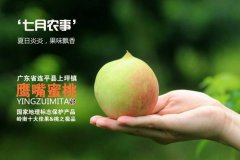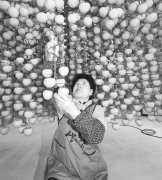What does Kun Sha Liquor in Maotai Town mean? Which ones are authentic Kun Sha Wine on the market?
If you look for liquor on Taobao, or the liquor-making stories that pop up on various websites, you will find that Maotai Kun sand wine is a very traditional name, more than 100 yuan for more than 10 bottles, it is easy for people to mistake it for local wine.

Kun Sha Liquor is Maotai Hun (khost n) sand wine.
The so-called Maotai muddy (khost n) sand liquor refers to the use of complete granulated red tasseled sorghum according to the traditional technology of Maotai Liquor. Every year, after mixing around Double-ninth Day and Jiuqu at 1:1 (commonly known as Xiasha), it is steamed eight times and dried seven times: nine times, the original wine distilled for the first time should not be added into the raw materials, dried, in brewing, two times feeding, eight times high temperature accumulation fermentation (each week), eight times under the cellar (each January). Distilled the wine seven times.
Take out the original wine cellar for three years, three years later blending seasoning, and then cellar for a year, the final inspection of the factory, that is, Kun Sha wine.
Muddy sand liquor is also called "Hunsha liquor" or "muddy seed liquor" in Maotai town. It is a traditional Maotai liquor, that is, it is often called authentic Maotai liquor. It is produced strictly according to the traditional Guizhou Moutai liquor technology. The production cycle is as long as one year, the liquor yield is low and the quality is the best. Its soul is the "sand return" process, that is, the raw materials are boiled nine times, fermented eight times, and taken wine seven times (this is the so-called 987 production process); and after more than three years of cellar storage, the sorghum can not be crushed, and the crushing rate is less than or equal to 20%. The cost of Maotai-flavor liquor with traditional technology is tens of yuan just for grain, so the selling price is higher. "
Different classifications of Sorghum Wine
According to the input of sorghum, Maotai sorghum wine can be divided into three types: relatively complete sorghum, the wine produced is "muddy (k ú n local dialect) sand wine"; the wine produced from ground sorghum is called "crushed sand wine"; the wine produced by discarded lees after the last nine times of cooking and adding some new sorghum and koji medicine is called "turning sand wine".
The raw material of sorghum is called sand in the production of Maotai-flavor liquor. The wine made from crushed sorghum is called "crushed sand wine". The production cycle of "crushed sand wine" is short, the liquor yield is high, and the quality is mediocre; it does not need strict "sand return" technology, and the wine in the grain is generally roasted two or three times. In order to make the wine have the flavor of sauce, the distiller's grains of "whole sand wine" is usually added during fermentation. In order to sell, some wineries often mix part of "Guansha Liquor" to pass it off as Maotai-flavor liquor.
The wine made from the lees discarded after the last 9th cooking of the bundled sand wine is called "turning sand wine" after adding some new sorghum and new koji medicine. The production cycle of "turning sand wine" is short, the liquor yield is high and the quality is poor.
- Prev

Lianping Shangping eagle mouth peach began to open in July to navigate to 10 yuan per jin.
From the phone's map and navigation software to find Lianping olecranon peach base, you will find three results, but in fact the results are not accurate, there are two places to go to only a few acres of out-of-season peach trees. If you find Lianping Shangping olecranon peach from your mobile phone, you will find that you will get off the highway.
- Next

The origin story of Korean persimmon! Flavor characteristics of Korean Persimmon and Fuping Persimmon
Whether Hakkas or Koreans, persimmons are very rough, but ripe fruits are not easy to preserve, so persimmons emerge as the times require. The fiery red persimmon hanging all over the branches is a common autumn scenery in Korea, and persimmon is also a cheaper fruit in Korea. New
Related
- The first cup of black tea in spring, the flavor and history of tea gardens in Kenya, Africa
- The computer can not only choose potatoes, but also grow tea rice. AI will grow winter oolong tea champion.
- It is not only the inflated tea bitten by insects, but also engraved with the four seasons tea in Beipu.
- The Oriental Beauty Tea Festival in Zhuxian County takes the stage at the weekend to experience the plus-size feast of oil tea.
- & quot; Oriental Beauty Tea & Exploration of Emei in Hsinchu, the hometown of quot;
- The new variety of strawberry "Tainong 1" dessert is the first choice with mellow aroma. Crimson gorgeous
- History of Tea in Taiwan: from Wild Inner Mountain to Export Tea Garden
- Two types of Taiwan Oriental Beauty Black Tea won the British three-Star Award for Childhood Tea Xiang Zhang Jiaqi changed from pilot to champion tea maker.
- Banana species and varieties: the planting history of Taiwan Xianren banana and dwarf banana is long, is banana disease resistant?
- Coffee planting Technology: Qianjie Coffee from Seedling to harvesting

